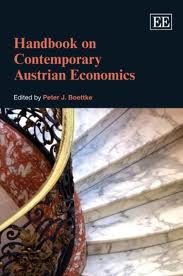In our various writings, we have suggested that loose monetary policy of the central bank, which amounts to the lowering of interest rates and monetary pumping, gives rise to activities that cannot exist by themselves without the support from this loose monetary policy.
An increase in money supply as a result of an easy monetary stance by the central bank sets an exchange of nothing for something i.e. the diversion of real wealth from wealth generators towards activities that emerge on the back of loose monetary policy. We label various activities that emerge on the back of loose monetary policy as bubble activities. Given that these activities cannot support themselves, they constitute a burden on wealth generators.
It is tempting to suggest that a tighter monetary stance of the central bank could undo the negatives of the previous loose monetary stance i.e. inflationary policy through the removal of bubble activities. In fact, this type of policies carries a label of countercyclical policies.
On this way of thinking, whenever economic activity slows down it should be the duty of the central bank to give it a push, which will place the economy back on the trajectory of an expanding economic growth. The push is done by means of loose monetary policy i.e. the lowering of interest rates and raising the growth rate of money supply.
Conversely, when economic activity is perceived to be “too strong”, then in order to prevent an “overheating” it should be the duty of the central bank to “cool off” economic activity by a tighter monetary stance.
This amounts to raising interest rates and slowing down monetary injections. It is believed that a tighter stance will place the economy on a trajectory of stable non-inflationary growth. On this way of thinking, the economy is perceived to be like a space ship, which occasionally slips from the trajectory of stable economic growth.
Hence, on this way of thinking it makes a lot of sense for the central bank to watch the economy all the time and make the necessary adjustments in order to keep the economy on the correct growth path.
It is also argued that because we do not exactly know the state of the economy at any point in time, it is quite possible that the central bank’s loose stance could be excessively loose which may result in a so-called overheating. This means that the loose policy will push the economy strongly above the trajectory of a stable non-inflationary growth.
Conversely, a tighter stance could be excessively tight thereby risking to plunge the economy below the trajectory of stable non-inflationary economic growth i.e. severe economic slump.
The view that the economy could be seen as a space ship is a misleading metaphor, since the economy is about human beings that use their means to achieve various goals. Given that economy is about human beings, no central authority can replace the free unhampered market that enables individuals achieving their goals in their best possible way.
The failure of various centrally planned economies such as the former Soviet Union is a testimony that central authorities attempt to push the economy towards the so-called desired trajectory results in an economic disaster.
Following Ludwig von Mises, we suggest that a tight monetary stance cannot undo the negatives of the previous loose stance. The misallocation of resources due to loose monetary policy cannot be reversed by a tighter stance.
An infrastructure that emerged as a result of the loose central bank stance cannot be altered just like that by a tightening stance. Various resources that were committed to the new infrastructure cannot always be easily shifted towards another infrastructure, which is in agreement with consumers priorities.
According to Percy L. Greaves, Jr. in “The Causes of the Economic Crisis and other essays before the Great Depression” – Mises Institute- Books/ Digital text
Mises also refers to the fact that deflation can never repair the damage of a priori inflation. In his seminar, he often likened such a process to an auto driver who had run over a person and then tried to remedy the situation by backing over the victim in reverse. Inflation so scrambles the changes in wealth and income that it becomes impossible to undo the effects. Then too, deflationary manipulations of the quantity of money are just as destructive of market processes, guided by unhampered market prices, wage rates and interest rates, as are such inflationary manipulations of the quantity of money.
A tighter monetary stance, whilst likely to undermine various bubble activities is also likely to generate various distortions thereby inflicting damage to wealth generators. Note that a tighter stance is still intervention by the central bank and in this sense; it does not result in the allocation of resources in line with consumers’ top priorities. Hence, it does not follow that a tighter stance can reverse the damage caused by inflationary policy.
We suggest that by freeing the economy from central bank manipulations the process of wealth destruction is going to be arrested. This we suggest is going to strengthen the process of real wealth generation. With a greater pool of real wealth, it is going to be much easier over time to absorb various misallocated resources.
Conclusion
Contrary to the popular way of thinking, the damage caused by inflationary policies cannot be undone by deflationary policy. The deflationary policy still remains a policy of intervention and in this sense sets in motion a different form of misallocation of resources. We suggest that this sheds light on the fallacious nature of the so-called counter cyclical policies, which we suggest inflict relentless damage on the process of real wealth formation.



